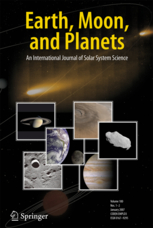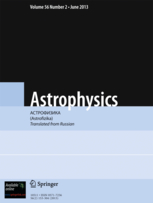Related Research Articles

In chemistry, the amount of substance (symbol n) in a given sample of matter is defined as a ratio (n = N/NA) between the number of elementary entities (N) and the Avogadro constant (NA). The entities are usually molecules, atoms, ions, or ion pairs of a specified kind. The particular substance sampled may be specified using a subscript, e.g., the amount of sodium chloride (NaCl) would be denoted as nNaCl. The unit of amount of substance in the International System of Units is the mole (symbol: mol), a base unit. Since 2019, the value of the Avogadro constant NA is defined to be exactly 6.02214076×1023 mol−1. Sometimes, the amount of substance is referred to as the chemical amount or, informally, as the "number of moles" in a given sample of matter.
Mathematical chemistry is the area of research engaged in novel applications of mathematics to chemistry; it concerns itself principally with the mathematical modeling of chemical phenomena. Mathematical chemistry has also sometimes been called computer chemistry, but should not be confused with computational chemistry.

Isis is a quarterly peer-reviewed academic journal published by the University of Chicago Press for the History of Science Society. It covers the history of science, history of medicine, and the history of technology, as well as their cultural influences. It contains original research articles and extensive book reviews and review essays. Furthermore, sections devoted to one particular topic are published in each issue in open access. These sections consist of the Focus section, the Viewpoint section and the Second Look section.

The Biochemical Journal is a peer-reviewed scientific journal which covers all aspects of biochemistry, as well as cell and molecular biology. It is published by Portland Press and was established in 1906.

Dalton Transactions is a weekly peer-reviewed scientific journal covering original (primary) research and review articles on all aspects of the chemistry of inorganic, bioinorganic, and organometallic compounds. It is published by the Royal Society of Chemistry and the editor-in-chief is Russell Morris. The journal was named after the English chemist, John Dalton, best known for his work on modern atomic theory. The journal was named a "rising star" in 2006.

The Annales Henri Poincaré is a peer-reviewed scientific journal which collects and publishes original research papers in the field of theoretical and mathematical physics. The emphasis is on "analytical theoretical and mathematical physics" in a broad sense. The journal is named in honor of Henri Poincaré and it succeeds two former journals, Annales de l'Institut Henri Poincaré, physique théorique and Helvetica Physical Acta. It is published by Birkhäuser Verlag. Its first Chief Editor was Vincent Rivasseau, followed by Krzysztof Gawedzki, and the current Chief Editor is Claude-Alain Pillet.

Helvetica Chimica Acta is a peer-reviewed scientific journal of chemistry established by the Swiss Chemical Society. It is published online by John Wiley & Sons. The journal has a 2023 impact factor of 1.5.

Applied Physics B: Lasers & Optics is a peer-reviewed scientific journal published by Springer Science+Business Media. The editor-in-chief is Jacob Mackenzie. Topical coverage includes laser physics, optical & laser materials, linear optics, nonlinear optics, quantum optics, and photonic devices. Interest also includes laser spectroscopy pertaining to atoms, molecules, and clusters. The journal publishes original research articles, invited reviews, and rapid communications.
The ACGC Chemical Research Communications is a scientific journal in chemistry, published by the Asian Coordinating Group for Chemistry (ACGC). The ACGC, which was formed in 1984, is an ad hoc committee of UNESCO comprising representatives of UNESCO Regional Networks and other organisations active in the promotion and development of chemistry in Asia.

The Proceedings of the USSR Academy of Sciences was a Soviet journal that was dedicated to publishing original, academic research papers in physics, mathematics, chemistry, geology, and biology. It was first published in 1933 and ended in 1992 with volume 322, issue 3.

Journal of Chemical Theory and Computation is a peer-reviewed scientific journal, established in 2005 by the American Chemical Society. It is indexed in Chemical Abstracts Service (CAS), Scopus, British Library, and Web of Science. The current editor-in-chief is Laura Gagliardi. Currently as of the year 2022, JCTC has 18 volumes.

Behavioural Brain Research is a peer-reviewed scientific journal published by Elsevier. The journal publishes articles in the field of behavioural neuroscience. Volume 1 appeared in 1980 and issues appeared 6 times per year; as submissions increased it switched to a higher frequency and currently 20 issues per year are published.

The Bulletin of Volcanology is a peer reviewed scientific journal that is published ten times per year by Springer Science+Business Media. It is the official journal of the International Association of Volcanology and Chemistry of the Earth's Interior (IAVCEI). The focus of the journal is volcanoes, volcanic products, eruptive behavior, and volcanic hazards. The Executive Editor is Marie Edmonds.

Astronomy Reports, is a Russian, monthly, peer reviewed, scientific journal. This journal tends to focus its publishing efforts on original research regarding astronomical topics. Other types of reporting are also included such as chronicles, proceedings of international conferences, and book reviews. Founded in 1924, it is described as the most prominent astronomy journal during the age of the Soviet Union. Originally a print version, it is also available online. The editor-in-chief was Alexander A. Boyarchuk, Institute of Astronomy of the Russian Academy of Sciences, Moscow, Russia.

Earth, Moon, and Planets is a peer-reviewed scientific journal, published approximately ten times per year by Springer Science+Business Media. It was established in 1969 under the title The Moon, was known as The Moon and the Planets from 1978 to 1983, and was first published under the current title in February 1984. The editor-in-chief is Jamie D. Gilmour. The journal's main focus is on research about the Solar System. Besides original research articles, Earth, Moon, and Planets publishes conference proceedings, review articles, book reviews, and special issues.

Pflügers Archiv: European Journal of Physiology is a peer-reviewed scientific journal in the field of physiology. A continuation of a journal founded in 1868 by the German physiologist, Eduard Friedrich Wilhelm Pflüger, Pflügers Archiv is the oldest physiological journal. Pflügers Archiv is currently published by Springer, with 11 issues per year.

Geophysical Journal International (GJI) is a monthly peer-reviewed scientific journal in the field of geophysics. It is published by Oxford University Press on behalf of two learned societies: the Royal Astronomical Society (RAS) and the Deutsche Geophysikalische Gesellschaft, who select and peer-review the contents.

Nature Physics is a monthly peer-reviewed scientific journal published by Nature Portfolio. It was first published in October 2005. The chief editor is David Abergel.

Astrophysics is a peer-reviewed scientific journal of astrophysics published by Springer. Each volume is published every three months. It was founded in 1965 by the Soviet Armenian astrophysicist Viktor Ambartsumian. It is the English version of the journal Astrofizika, published by the Armenian National Academy of Sciences mostly in Russian. The current editor-in-chief is Arthur Nikoghossian.
RACSAM is the mathematical journal of the Spanish Royal Academy of Sciences. It publishes research papers exclusively in English.